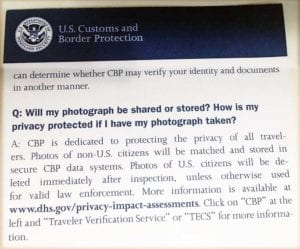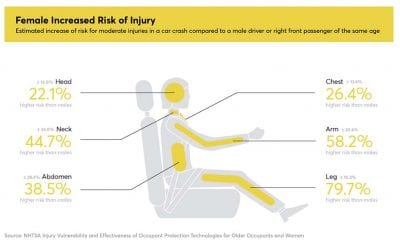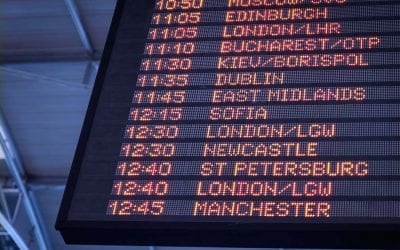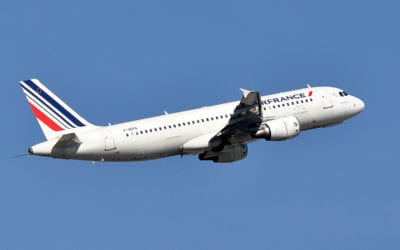Facial recognition is not a violation of privacy. Passport and visa photos already exist to allow the system to work.
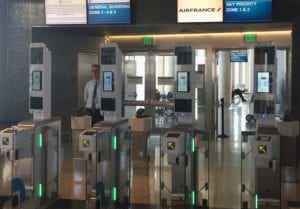
I realize that no fundraising opportunity should be passed up, but using false information and incomplete information to ramp up an inflammatory fundraising effort is not what the country needs today. With facial recognition being tested at more and more airports and being rolled out across the nation, the basics need to be accurate and understood by all American citizens.
The European Union has used facial recognition for years.
In Europe, facial recognition has been tested and used for several years. Most large airports have automatic lanes where incoming European Union citizens are screened using facial recognition. While incoming foreigners wait in lines that snake up to passport inspectors and often stretch on for hour-long waits, the EU citizens can zip through passport control in minutes and be on their way to connecting flights.
 Facial recognition is being tested at eight international gateways in the US.
Facial recognition is being tested at eight international gateways in the US.
I have recently visited three of these operations at Dulles International Airport in Virginia, Los Angeles International Airport in California, and at Orlando International Airport in Florida. There, facial recognition is being used to speed up the boarding process for international flights and to match visa and passport photos with the official photos on file with the State Department. Tests are being conducted at eight US airports.
Until the introduction of these facial recognition systems, there has been no way to verify when foreign visitors using temporary visas to enter the US have departed the country. The facial recognition programs are also used to control incoming visa and passport holders. Plus, there is no requirement for US citizens to go through the facial recognition program.
During my visits to three international gateways, entire planeloads of Boeing 777s and 747s were loaded at the jetway where the facial-recognition systems were installed in less than 20 minutes — some as quickly as 15 minutes. The bottom line: Boarding was faster and more secure for the country.
Facial recognition images of US citizens taken at airports are not stored. Photos of non-US citizens are retained for up to 14 days.
According to the August 14, 2018, Privacy Impact Assessments for the Traveler Verification Service (DHS/CBP/PIA-030(e)):
CBP does not retain images of U.S. Citizens in ATS-UPAX but does retain images of non-U.S. Citizens for up to 14 days for confirmation of the match, as well as evaluation and audit purposes. CBP deletes all photos, regardless of immigration or citizenship status, from the TVS cloud matching service within 12 hours of the match.
…
In an effort to mitigate the impacts of this expanded collection, CBP seeks to minimize the data it maintains by purging facial images as quickly as possible after use. Each traveler’s biographic and biometric data is deleted from the TSA-issued device, either at the time of the next passenger’s transaction or after two minutes, whichever occurs first.
There are photographs that are retained by CBP for passport control and visa control, however, the images captured at the border inspection stations are not retained after they are compared with the passport and visa photos already stored with the passport and visa offices. There are no “mug shots” being taken of travelers. All international travelers who enter the US legally have passport and visa photos that are submitted prior to arrival and saved in secure locations with the US government.
 TSA is testing facial recognition for international departures. There are no plans to require facial recognition for domestic travel.
TSA is testing facial recognition for international departures. There are no plans to require facial recognition for domestic travel.
The fundraising letter noted that TSA wants to make airport security more invasive and that they plan to team up with Customs and Border Patrol to go through a facial recognition for domestic travelers. THIS IS NOT TRUE! The CBP programs being tested across the country are designed for border, visa, and passport control. There are no plans to employ facial recognition for domestic travel.
Is TSA testing the facial recognition systems for international departures? Yes. There is a coordinated test at TSA checkpoints that are segregated for international passengers where the facial recognition system is owned by CBP and the computers used at the ID check are owned by TSA. Any US citizen who does not want to go through the CBP facial recognition system can go through the standard ID checking procedures.
All images of US citizens used by the CBP at border control points are immediately destroyed. Photos of foreign visitors traveling with passports and visas will be retained for 14 days and then destroyed.

Charlie Leocha is the President of Travelers United. He has been working in Washington, DC, for the past 14 years with Congress, the Department of Transportation, and industry stakeholders on travel issues. He was the first consumer representative to the Advisory Committee for Aviation Consumer Protections appointed by the Secretary of Transportation from 2012 through 2018.

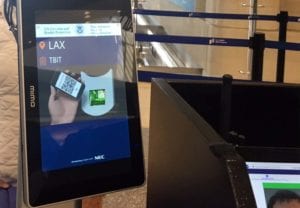 Facial recognition is being tested at eight international gateways in the US.
Facial recognition is being tested at eight international gateways in the US.